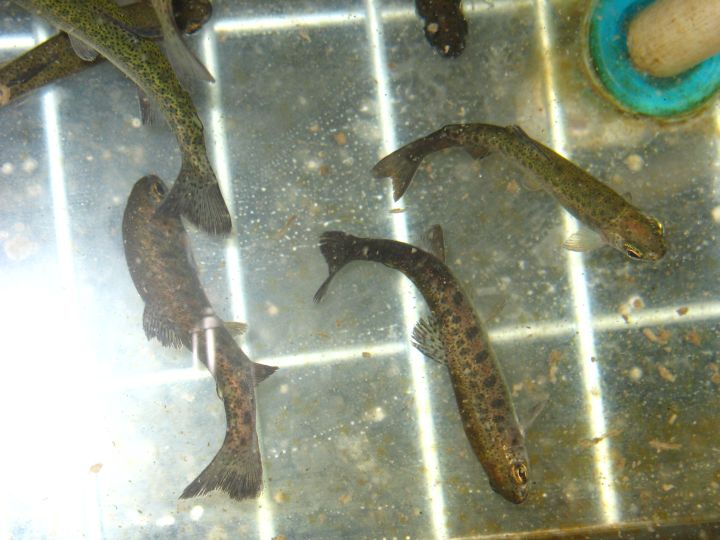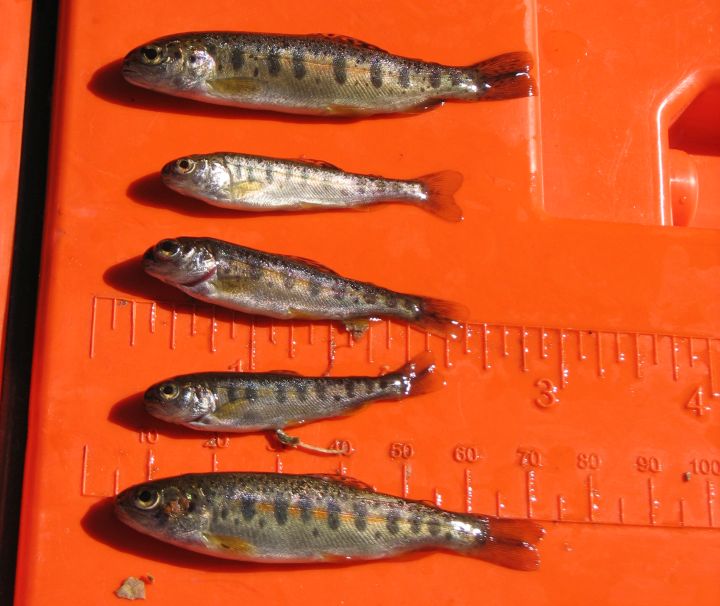Less than three weeks after the federal government announced the first Canadian case of whirling disease was found in fish in Banff National Park’s Johnson Lake, Canadian Food Inspection Agency (CFIA) said the infectious disease has spread to the Bow River.

Whirling disease doesn’t harm people or other mammals, but can have a significant effect on salmonoids—salmon, trout, char and whitefish. Rainbow trout and westslope cutthroat trout are the two species affected in Johnson Lake.
READ MORE: Infectious ‘whirling disease’ found in fish at Banff’s Johnson Lake
Read the CFIA fact sheet on whirling disease here
Whirling disease was found in the upper Bow River, downstream from the confluence of the Bow and Cascade rivers within Banff National Park, officials said Monday.
Watch below: FishPathogens.net’s video of a rainbow trout infected with myxobolus cerebralis, displaying typical signs of whirling disease.
Emergency response and mitigation plans to the initial finding of whirling disease spurred a precautionary quarantine on all commercial fish culture operations related to Johnson Lake.
“Sample results from the Sam Livingstone Provincial Fish Hatchery in Calgary and the Cold Lake Provincial Hatcheries have tested negative,” the Alberta government said in a Monday statement.
The president of the Angling, Outfitters and Guide Association of Alberta said she’s pleased more testing is being done.
“I think it’s really important to get a handle on how widespread it is and to begin the education process for people to figure out how to reduce the potential to spread it,” Susan Storwick said.
“I suspect it could be more of an education campaign than one of containment.”
Officials are now collecting samples from areas adjacent to the Bow River, Oldman River and upper Red Deer River watersheds.
Alberta Environment and Parks is creating a Whirling Disease Management Committee, with “representatives from various federal agencies and stakeholders to implement procedures to identify, test and manage whirling disease as well as communicate with affected stakeholders.”
Provincial officials are also asking whirling disease be added to the upcoming Canadian Council of Ministers of the Environment agenda at the end of September “due to its potential economic and recreational impact.”
Officials offered the following reminders for visitors to affected areas:
- Fish and fish parts caught while fishing should be properly disposed of
- All equipment and gear such as boats, trailers, waders, boots, float tubes, and fins should be cleaned both before and after recreating in any body of water
- Rinse all mud and debris from equipment and gear
- Drain water from boats before leaving an area
- Allow all equipment and gear to dry before entering another water body
- Wash dogs with warm water and brush them thoroughly
The province asks anyone who suspects a case of whirling disease to call 1-855-336-BOAT (2628).




Comments